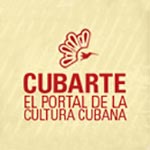Nace en 1938. Después de estudiar pintura, Nicolás Guillén Landrián entró al ICAIC en 1962 como asistente de producción. Entre sus primeras tareas estuvo asistir a Manuel Octavio Gómez en la dirección de Historia de una batalla (1962); fue discípulo, al igual que todos los realizadores que se formaban como documentalistas del naciente cine institucional cubano, de Joris Ivens y Theodore Christensen; hasta que es designado para dirigir sus propias obras. Trabajó en la radio como locutor.
Su primer documental fue parte del Noticiero ICAIC Latinoamericano y se titula Un festival (1963). En él se resume la celebración en La Habana de los primeros Juegos Universitarios Latinoamericanos. Bajo una incesante descarga jazzística, su estructura reporteril refiere la llegada de las delegaciones, el recibimiento, el ambiente de camaradería en los hoteles, los entrenamientos y la competición, las palabras inaugurales a cargo de Raúl Castro, la presencia de Fidel entre el público, el fetecún final. Aquí la forma cinematográfica no hace otra cosa por el contenido como no sea potenciar la síntesis. Mas, se vislumbran ya los rasgos que le buscarían fama de excéntrico: ausencia de narración o entrevistas (salvo en la coda, donde un delegado de El Salvador cuenta cómo se ha visto obligado a volver a Cuba tras la persecución a que fue sometida la delegación a su regreso) y un tono como descuidado, juguetón.
Guillén Landrián, quien confesó haber padecido cierto síndrome de competencia familiar alrededor del otro Nicolás, el poeta (su tío paterno), admitió siempre su inclinación por evitar el parecido -inclinación por la cual entonces te acusaban de autosuficiente-: “Yo trataba de hacer un cine que no fuese igual a lo demás, que no coincidiera con lo demás, que fuera un cine muy personal (…) La imagen era más importante que la palabra en sí. Me interesaba elaborar la imagen a través de un lenguaje nuevo, un lenguaje atrevido, interesante para el espectador.”
Ello se materializó de inmediato, cuando en el mismo 1963, también como parte del Noticiero, terminara En un barrio viejo. Esta parece la obra de alguien completamente distinto, debida a la colaboración con dos de los realizadores inseparables de sus mejores películas: la editora Caíta Villalón y el fotógrafo Livio Delgado. Ya con En un barrio viejo inaugura su inclinación por saturar de sentido los cortos minutos de sus documentales. Asimismo, otorga a su trabajo con el material de la realidad una complejidad extraña: las discusiones conceptuales y estilísticas del neorrealismo italiano, el free cinema, el cinema verité y el direct cinema, de las experimentaciones de la vanguardia europea (algo de las posturas estéticas del cine de autor de los iconoclastas de la nouvelle vague anida por ahí) parecen hacer metástasis en un estilo demasiado personal para adscribirlo a escuela alguna.
Los del baile (1965) fue esa otra cosa. Aquí queda claro que la vocación etnográfica del cineasta no se reduce a una militancia étnica o política. Aunque los negros sean a menudo los sujetos de su mirada, le importan en tanto que individuos en su contexto. Guillén Landrián era un animal mundano, pero la inquietud por su mundo no lo dejó detenerse en marcas de carácter racial o en grupos concretos. En el caso de Los del baile es la fiesta. Y el contraste. Pello el Afrocán y su banda ocupan el prólogo. El resto son los bailadores. Nicolasito se interesa más por los cuerpos en ese trance frenético de los sexos gobernados por la música. Y echa mano a los contrapuntos: en este caso, entre una música de clavicordio, suave, que ilustra con imágenes de danza casta y privada en sociedades de color, o una muchacha casi adolescente que se balancea en un sillón o ante el espejo de la cómoda, rodeada de fotos y huellas familiares.
Si en En un barrio viejo el recurso potencia la intención plástica que el gris interno de la fotografía acentúa, en el resto de su obra posee un matiz decididamente transgresor: esas miradas obligan a cuestionar las nuestras. ¿Somos engranajes integrantes del proceso histórico o, por el contrario, nos zarandea su ventisca?
Cuenta Nicolasito que a partir de aquí se quedó sin temas. Paralizado. Fue Teodore Christensen quien le propuso irse al campo. Obedeció y encontró qué contar. Además, se encontró a sí mismo, y con ello, la angustia definitiva. De este periplo por el oriente cubano surge Ociel del Toa (1965), al parecer, el primero en salir de moviola (y por el que obtuviera la Espiga de Oro al mejor documental en la oncena edición del Festival de Valladolid, al año siguiente) de una trilogía realizada en el mismo período, integrada además por Reportaje y Retornar a Baracoa (ambos de 1966).
Retornar a Baracoa posee los primeros insertos de foto fija de su cine, así como fotoanimación e intertítulos, recursos que en lo adelante usaría profusamente. Estos últimos, como forma de disfrazar al narrador pero también de dialogar con las imágenes desde ángulos diversos, convirtiéndose a menudo en herramienta de provocación y en voz omnisciente del autor.
Si Retornar a Baracoa acaba siendo una crónica del lugar con episodios tan diversos que no consiguen integrarse del todo en un sentido externo más allá de su contenido testimonial, con intentos por calar debajo del acontecimiento para alcanzar su esencia, Reportaje (1966) (también conocido como Plenaria campesina) es ya una obra sin fisuras. Sobre los créditos iniciales, una música grave, terrible, que acaba con la primera imagen: una procesión de campesinos recorre los escarpados caminos de la sierra. Alguien alza un cartel donde se lee: “EPD Don Ignorancia”. Es un entierro. Pero la teatralidad general se hace notar: el ataúd es una larga caja de cartón y el silencio sobrecogido de los dolientes es falso; alguien mira a cámara y sonríe mientras que otros cubren las narices con pañuelos, como si sollozaran.
En Retornar a Baracoa había sido sustituida por la esperanza abierta al cambio mejorador, esperanza ingenuamente depositada en la erección de una carretera. En Reportaje, el tono ya es otro. De este documental en lo adelante el estilo de Guillén Landrián se hará más tenso, grave. El desenfado divertido y el como abandonarse al registro de episodios fugaces de una trama compleja pero no fatal de acontecimientos se torna sombrío.
Coffea Arábiga (1968), documental por encargo, lo devuelve un artista nuevo, cada vez más capacitado para violentar las convenciones de los lenguajes y los utilitarismos de la obra de arte. El frenesí es lo primero que salta a la vista en la textura de Coffea Arabiga, documental edificado esencialmente a partir del montaje, verdadero pastiche de propaganda política, literatura científica, fotoanimaciones, empalmes sonoros desquiciados e imaginativos, donde el intertitulado juega un papel irónico y desgarrado a la vez, al llevar buena parte del peso en los contrapuntos que aquí son tan agudos como complejos, y donde por vez primera Guillén Landrián echa mano a las “palas” al falsear un hecho que, no obstante, refiere como realidad documental. Si uno no quiere complicarse la vida, decide que al director lo venció la locura y pasa a lo que sigue. Pero es difícil creer que después de haber palpado el sinsentido de la existencia no ensayara su particular intento de advertir a los otros.
La siguiente película de Guillén Landrián fue una personal indagación del devenir nacional: Desde La Habana ¡1969!… ,obra más decididamente experimental de Guillén Landrián (si entendemos por ello su intención abiertamente no narrativa, comprometida antes con una orientación de impacto sensorial de tan heterogénea reunión de elementos, organizando un sentido difuso a partir de combinaciones poco previsibles) y una de las aventuras mejor identificables con un proceder no aristotélico en la historia del cine cubano. Ello, sin renunciar del todo al pacto narrativo o a la estructura de tres tiempos del relato.
En Taller de Línea y 18 (1971) utiliza por primera vez un narrador eficiente y claro, voz que enumera detalles técnicos de la labor en la fábrica de ómnibus que se propone biografiar la película. Otra vez, parece la obra de un autor distinto… excepto por el sonido. Taller… se desplaza en dos direcciones simultáneas: la explicación sumaria de los distintos procesos técnicos que se siguen en la fabricación del ómnibus (otro ingeniero ofrece explicaciones, ahora sin joda) y una asamblea que, repartida en fragmentos a lo largo del documental, efectúa el proceso sindical.
Guillén Landrián termina tres documentales más, que ahora sí parecen obra de un animal extraño, no suyos. Solo Nosotros en el Cuyaguateje (1972) tiene trazas de su estilo. Pese a un narrador distante, que lee un texto frío donde se explica el proceso de derivación de las aguas de ese río y cómo beneficia a los campesinos residentes en la zona, a persistentes planos de la maquinaria involucrada en la transformación; pese a textos en pantalla que si acaso explican, nunca dialogan; hay instantes: una familia reunida, el bohío viejo; la escuela, donde una maestra casi tan joven como los niños a quienes enseña, nos mira con toda la tristeza del mundo en las órbitas. Corte directo de un gran primer plano de esas pupilas a punto del llanto hasta las máquinas que excavan. Algo de la música del Grupo de Experimentación Sonora aporta tensión. Pero uno echa en falta la conmoción ante lo que se ve. O sea, el estilo visual es el mismo en esos momentos, pero no estalla la pasión interna que potencian relaciones sutiles o no, pero intensas, entre elementos dispares, que organizan ese diálogo enfebrecido entre los fragmentos del mundo que descubre Nicolasito. Languidece su cine, que acaba con Un reportaje sobre el puerto pesquero (1972) y Para construir una casa (1972), un didáctico acerca de las faenas constructivas punto por punto, detalle por detalle, que contiene una plasticidad fotográfica y una capacidad de síntesis que de alguna manera lo salva, como mismo lo salva esa advertencia final, cuando se enumeran docentemente los recursos materiales imprescindibles para la fabricación de viviendas y se aclara que, más que todo ello, lo esencial son los hombres: “Para estos hombres es que se hace este documental”.
Contra todo lo imaginable, y a tres décadas de interrumpirse su obra cinematográfica, Guillén Landrián vuelve a dirigir. Inside Downtown (2001), codirigido por José Egusquiza Zorrilla, quien produjera e hiciera el trabajo de cámara, es como la vuelta a los orígenes: En un barrio viejo vuelto a filmar. Su obsesión es la misma: biografiar la vida del barrio, de la comunidad a la que pertenece ahora el cineasta, lo que conoce por su nombre de pila. “Quería comunicar que yo estaba en Miami, que estaba vivo y haciendo cine -confesó. (…) es como una necesidad mía de demostrarme que podía realizar cine todavía.”
El 23 de julio de 2003 falleció, víctima de un cáncer de páncreas. Tenía 65 años y su voluntad fue que lo sepultaran en Cuba.
(Fragmentos del texto Exorcismo del demonio, de Dean Luis Reyes, publicado en la Revista Miradas, de la EICTV).
Nicolás Guillén Landrián (1938-2003), after studying painting, began to work at the ICAIC in 1962 as a production assistant. One of his first tasks was to assist Manuel Octavio Gómez while directing Historia de una batalla (1962). Like all the directors who were emerging as documentary makers in the Cuban Institute of Film Art and Industry he was a pupil of Joris Ivens and Theodore Christensen, until he was appointed to direct his own works. He also worked in radio as an announcer.
His first documentary was part of the Noticiero ICAIC Latinoamericano newsreel and it was entitled Un Festival (1963). It summarizes the celebration in Havana of the first Latin American University Games. With a constant rhythm of jazz, its structure of report relates the arrival of delegations, the reception, and the atmosphere of camaraderie in the hotels, the training and competition, the opening speech by Raúl Castro, Fidel's presence among the audience and the final party. Here the cinematic form only enhances the synthesis. But one can see features that would give Nicolás his fame as an eccentric. There was no narration or interviews (except in the coda, where a delegate from El Salvador recounts how he was forced to return to Cuba after the persecution his delegation suffered on its return) and a tone of carelessness and playfulness.
Guillén Landrián admitted having had a certain syndrome of family competition because of the other Nicolás, the poet (his uncle on his father’s side). He also always admitted his intentions to avoid similarity -intentions for which people could be accused of self-satisfied at the time: "I tried to do films that were not just like the others, films that differed from the rest and were very personal films (...). The image was more important than the word itself. I was interested in developing the image through a new language, a bold language, attractive for the viewer.”
This became immediately real, when just in 1963, also as part of the newsreels, he ended En un barrio viejo. This seems to be the work of someone completely different, due to his collaboration with two of the inseparable filmmakers of his best films: the editor Caíta Villalón and the cinematographer Livio Delgado. Already with En un barrio viejo began his penchant to saturate with meaning the short minutes of his documentaries. At the same time, he granted a strange complexity to his work with the material of reality: the conceptual and stylistic discussions of the Italian neorealism, the free cinema, the cinema verite and direct cinema, the European avant-garde experimentations (something of the aesthetic positions of the Nouvelle Vague’s iconoclastic cinema de auteur) seem to make metastasis in a style too personal to be assigned to any school.
Los del baile (1965) was something else. Here is clear that the filmmaker’s ethnographic vocation is not confined to one ethnic or political activism. Although Blacks are often the subject of his gaze, he cares about them as individuals in a particular context. Guillén Landrián was a mundane animal, but the concern for his world would not let him stop at racial brands or at specific groups. In the case of Los del baile is the party. And the contrast. Pello el Afrocán and his band are part of the prologue. The rest are the dancers. Nicolasito is more interested in the bodies at this frantic trance of the genders governed by the music. He makes use of the counterpoints: in this case, between the clavichord’s soft music, illustrated with images of a caste private dance or an almost teenage girl in a rockingchair or in front of the mirror, surrounded by photos and family memories.
If in the film En un barrio viejo the resources foster the plastic intention that is reinforced by the internal gray of the cinematography, in the rest of his work it has a decidedly transgressive nuance: these looks force us to question our own. Are we just gears that are part of the historical process or, on the contrary, are we shaken by its blizzard?
Nicolasito tells that, from that film on, he ran out of topics. He was paralyzed. Theodore Christensen was the person who proposed him to go to the countrysite. He followed Christensen’s advice and found what to tell. In addition, he found himself, and thus the definite anguish. During this journey through the Cuban eastern region Ociel del Toa (1965) was born, which seems to be the first to be edited (and earned him the Golden Spike for Best Documentary in the 11th edition of the Valladolid Film Festival, the next year) of a trilogy made in the same period, which is also integrated by Reportaje and Retornar a Baracoa (both from 1966).
Retornar a Baracoa has the first inserts of still photographs in his films, as well as animated photos and intertitles, resources that henceforth he would use extensively. The latter, as a way of disguising the narrator but also of dialoguing with the images from different angles, becoming often in a tool of provocation and omniscient voice of the author.
If Retornar a Baracoa ends up being a chronicle of the place with various episodes that fail to fully integrate an external sense beyond its testimonial content, with attempts to penetrate beneath the event in order to reach its essence, Reportaje (1966) (also known as Plenaria campesina) is already a faultless work. On the opening credits there is a grave music, with terrible connotations, that ends with the first image: a procession of peasants who runs through the steep mountain roads. Someone raises a placard where it is written: "EPD Mr. Ignorance." It is a funeral, but one can notice a general theatricality: the coffin is a long cardboard box and the awed silence of the mourners is false; someone looks into the camera and smiles while others cover their noses with handkerchiefs, as if weeping.
In Retornar a Baracoa, it was substituted by the hope open to the improving change, a hope that was naively placed in the building of a road. In Reportaje, the tone is different. From this documentary on, the style of Guillén Landrián will become more tense and serious. The fun carefree style and the abandonment to the registration of brief episodes as part of a complex but not deprived of events plot become dark.
Coffea Arabiga (1968), a commissioned documentary, returns him as a new artist, increasingly able to violate the film language conventions and the utilitarianism of the art works. The frenzy is the first obvious element in the texture of Coffea Arabiga, a documentary essentially built on the basis of the montage, a real pastiche of political propaganda, scientific literature, photo-animation, crazy and imaginative sound mixtures, where the titles plays an ironic and dramatic role at the same time because it carries much weight in the sharp and complex counterpoints, which are here so sharp as complex. For the first time Guillén Landrián use a "fake", as he distorts a fact that, nevertheless, presents as documented reality. To make it easy, it would be decided that the director went crazy and go to the next thing. But it is hard to believe that after having touched the meaninglessness of existence the filmmaker would not rehearse his particular attempts to warn others.
Guillén's next film was a personal inquiry into the nation's future: Desde La Habana 1969! .... , a much more experimental work (if it is understood as its openly non-narrative intention, previously committed to an orientation of sensory impact tof such heterogeneous elements, organizing a vague sense starting from unpredictable combination) and one of the best recognizable adventures with a non-Aristotelian procedure in the history of Cuban cinema. This happens, without renouncing to the narrative pact or the three-times structure of the story.
In Taller de Línea y 18 (1971), he used an efficient and clear narrator for the first time, a voice that lists technical details of the work in the bus factory about which the film tries to make a biography. Again, it seems to be the work of a different author ... except for the sound. Taller... moves in two simultaneous directions: the summary explanation of the different technical processes that are carried out in the manufacture of the bus (other engineer offer explanations) and a meeting that, divided into fragments during the documentary, carries out the labor union process.
Guillen finished three other documentaries that now really seems the work of a rare specimen, not works of his own. Only Nosotros en el Cuyaguateje (1972) has traces of his style. In spite of a distant narrator, who reads a cold text explaining the process of diversion of the river’s waters and how it benefits the rural residents in the area, of always present shots of the machinery involved in the procedure-, In spite of texts on the screen that barely explain and never dialogue; there are instants, the gathering of a family, an old shack; the school where a teacher almost as young as the children she teaches looks at us with all the sadness in the world reflected in her eyes. There is a direct cut from a large close-up of those pupils on the verge of tears to the machines that dig. Some elements of the music of the Grupo de Experimentación Sonora provides tension. But one misses the shock of facing what it is shown. The visual style is the same in this moments, but does not burst the inner passion that fosters maybe subtle or not but always intense relations between the diverse elements that organize that feverish dialogue between the fragments of the world discovered by Nicolasito . His films languish, ending with Un reportaje sobre el puerto pesquero (1972) and Para construir una casa (1972), a didactic note on the constructive tasks given step by step, detail by detail and which contains a photographic plasticity and a capacity for synthesis that somehow saves this work. As it also saves this documentary the final warning, when the necessary material for the fabrication of houses are listed in a pedagogical way, and it is clarified that more than anything else, the essential elements are the men: "This documentary is made for these men."
Beyond all possible imagination, and after three decades of having interrupted his film work, Guillén Landrián directed again. Inside Downtown (2001), co-directed by José Egusquiza Zorrilla, who produced and did the camera work, it is as a return to the origins: En un barrio viejo shot again. His obsession is the same: to make a biography of the life of the neighborhood, of the community to which the filmmaker belongs now and knows by its nickname. "I wanted to communicate that I was in Miami, alive and making films -he confessed. (...) It is something like a need to demonstrate to myself that I could still make films."
On July 23, 2003 he died a victim of pancreatic cancer. He was 65 and his last will was to be buried in Cuba.
(Excerpts from the text Exorcismo del demonio, by Dean Luis Reyes, published in the web magazine Miradas of the International Film and Television School (EICTV) of San Antonio de los Baños, Havana, Cuba.
 “Nuestro objetivo final es nada menos que lograr la integración del cine latinoamericano.
Así de simple, y así de desmesurado”.
“Nuestro objetivo final es nada menos que lograr la integración del cine latinoamericano.
Así de simple, y así de desmesurado”.













